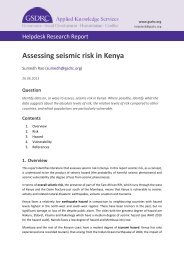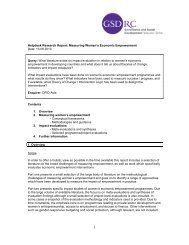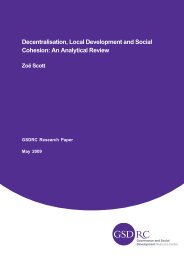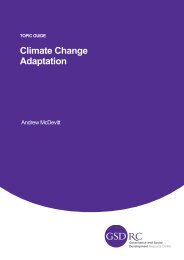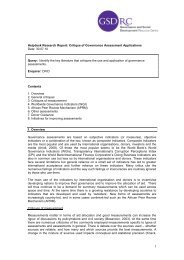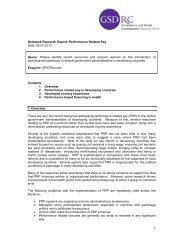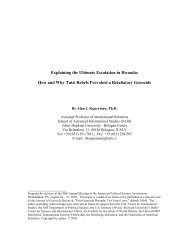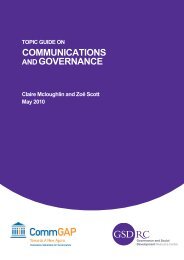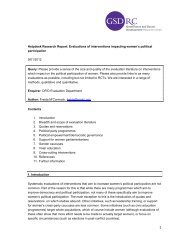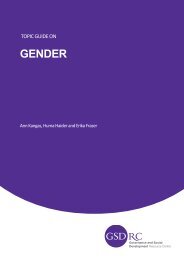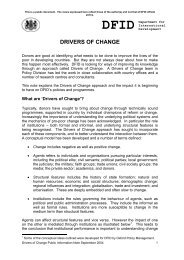ACCESS TO JUSTICE FOR THE POOR OF MALAWI? AN ... - GSDRC
ACCESS TO JUSTICE FOR THE POOR OF MALAWI? AN ... - GSDRC
ACCESS TO JUSTICE FOR THE POOR OF MALAWI? AN ... - GSDRC
- No tags were found...
You also want an ePaper? Increase the reach of your titles
YUMPU automatically turns print PDFs into web optimized ePapers that Google loves.
societal values in order to bring them in line with the constitution without necessarilydisrupting the social fabric. It is also doubtful whether the type of magistrate on theground is competent enough to handle this daunting task.This study also revealed certain instances whereby magistrates have condoned orencouraged gross human rights violations through their judgements and women haveparticularly fallen victims of this approach.Magistrates have for example made orders, which confirm negative gender basedstereotypes and consolidate patriarchy.The study found that the magistrates had a shallow understanding of constitutionalrights provisions. At least two of the interviewees confessed that they had never readthe constitution. One of them even alleged that he had received a copy of theconstitution from the first grade magistrate two days before the research team came tovisit him in June 2002.When asked to mention the Constitutional provisions they applied, the respondents,normally mentioned bail provisions. The other constitutional provision which mostmagistrates seemed to know is the one that validates marriage by permanentcohabitation.Resources and management of subordinate courtsOne of the necessary conditions for ensuring access to justice is that a system must beadequately resourced and organised. This study, however, revealed that the judiciarylacks resources to extend the proper administration of justice to rural areas. Morespecifically the judiciary has inadequate and poor quality infrastructure.These problems were said to be attributable to the following causes:• Chronic under-funding of the judiciary. The following data exemplifies theproblem. The approved monthly budget for the whole year is roughly K3 millionto be shared between the High Court and magistrates. The Regional Magistratesbudget fluctuates between K12000 to K100000 per month to cater for stationery,staff allowances, emergencies, funerals and transport.• Centralised administration of funding: Funds from the treasury are forwarded tothe Registrar who then transfers funds to the courts. Sometimes it takes time forfunds to trickle down the system. The judiciary is treated like a small Ministrywhile it is a separate branch of government.• A substantial amount of the judiciary’s resources are absorbed by the highercourts and the administration sections of the judiciary. This is because courtadministrators do not seem to know what the core functions of the judiciary are,hence they spend much time pleasing the higher judiciary.• The fact is that the judiciary does not have a political platform on which to tableits demands because it is not represented at cabinet level. The Minister of Justicewho represents the judiciary in parliament appears detached.• The resource base of the judiciary has not expanded to cater for its additionalresponsibilities following integration. Marshalls have no uniforms, no form oftransport.21



